Today we conclude the 2019 Complete Namibia Tour & Workshop travelogue series, as we head into the Etosha National Park for a final four days ending this year’s tour. As I mentioned last week, Namibia is having a pretty nasty drought this year, so the wildlife dynamic was somewhat different from a typical year, but I’m a firm believer in being presented with fresh opportunities when something is taken away from us, and Etosha this year was no exception, as you’ll see in some of today’s ten images.
Young Rhino Squabble
We started our Etosha experience with a game drive in our lodge’s private reserve, which is actually adjacent to the park, and they explained to us that they had made a decision to bring in some grass to feed their White Rhino population. They were worried about our reaction to this, but the way I see it, there are enough rotten humans out there taking these magnificent creatures away from us, that I’m totally OK with the good guys helping them to stay alive during this hard year.

You can actually see the grass in this image, with a young male Rhino getting feisty, and throwing his weight around with an older, more cautious, female Rhino. The last of the evening sun was still falling on the scene at this point, giving us that beautiful golden light, and I increased my ISO a little to 1600 to give me
Feisty White Rhino
As the sun continued on its path taking it below the horizon, the light lost its color, making this next image almost completely black and white. This is the same young male Rhino, who just kept running around, kicking up dust, and generally giving the other young Rhino a hard time.
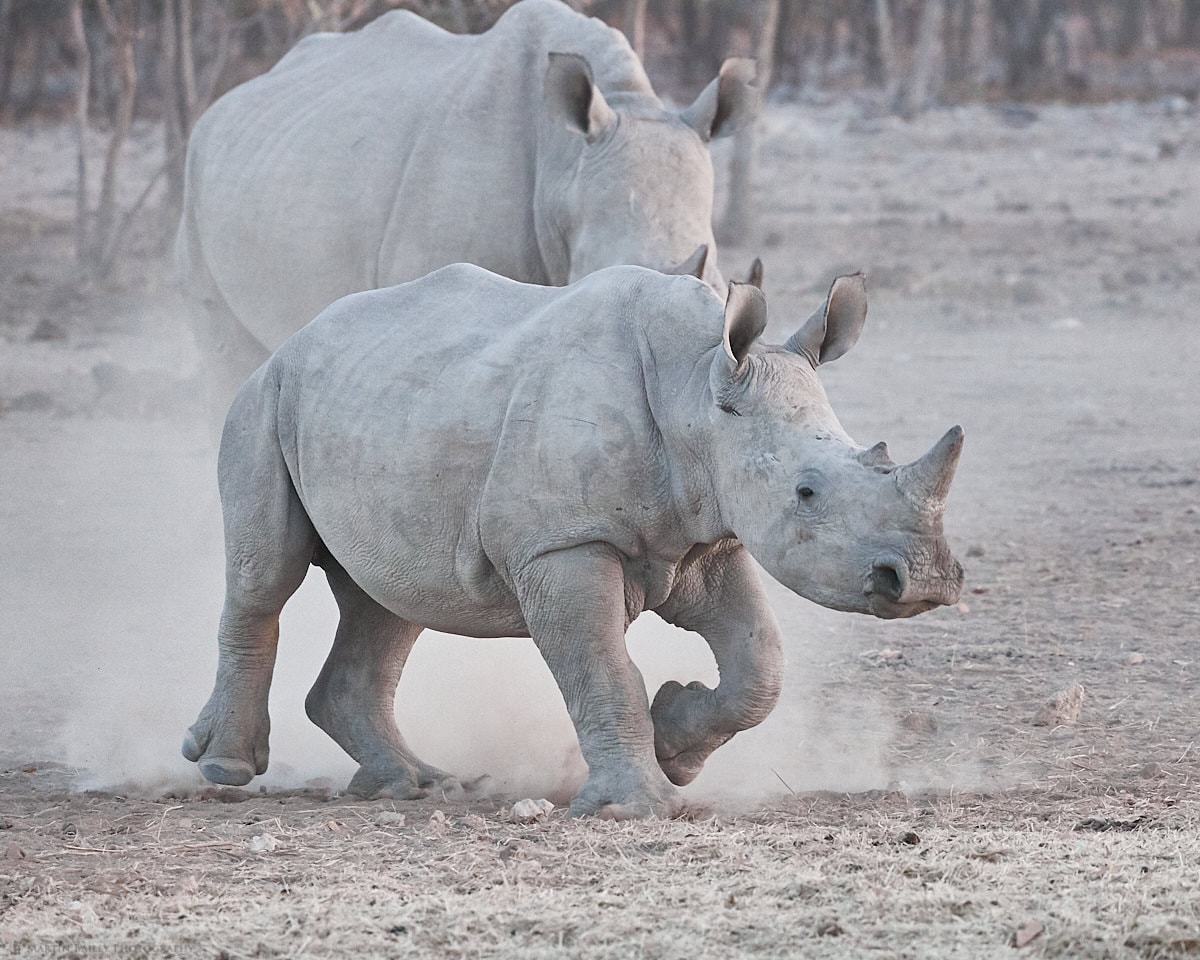
It’s great to see these animals with their horns, as many reserves are dehorning them in a bid to keep poachers away, although there is now some debate about the effectiveness of this practice. Seeing these animals with their horns though is one of the major benefits of using the lodge that we stay at for the first two nights at Etosha. Of course, I support any measures that the people take in the fight against poachers, as long as it doesn’t involve rich people with guns.
Zebra in the Dust
In this next image from inside the Etosha National Park the following day, you’ll see that some parts of park were completely baron of any grasses for the animals. This same area was a grassy plain last year, so the animals are struggling, but the dust that these zebras kicked up adds a lot of atmosphere to this shot in my opinion.
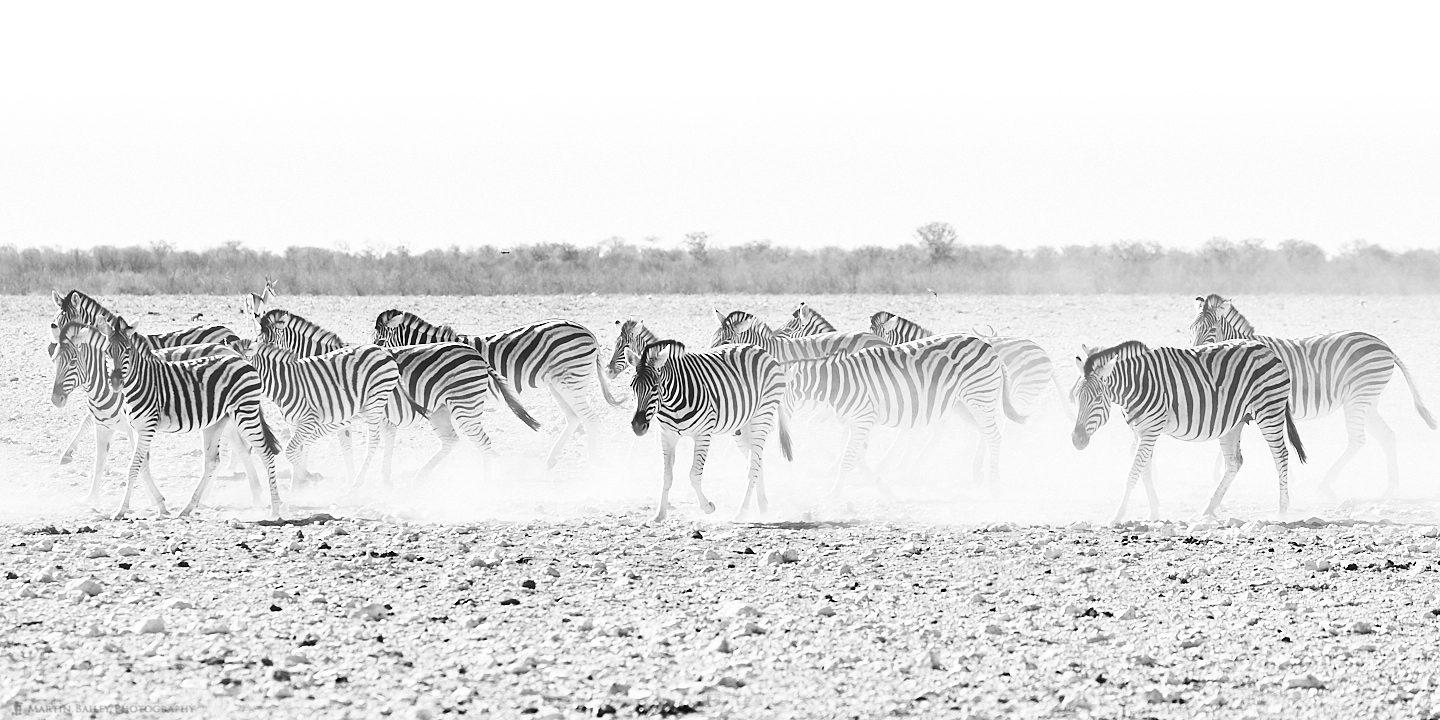
This is one of the bonuses that I believe we were presented with, in place of the grasses that can also look very beautiful. I processed this is such a way that the dust is actually a little brighter than it was in reality, giving it a slight glow, complimenting the graphically stunning zebra. I just love it when there is something that helps us to see the air in a photograph. It really does literally add “atmosphere” to an image. The processing was just a few deftly tweaks to the Tone Curve in Capture One Pro. Nothing difficult, but very effective, in my opinion.
Young Zebra
Another thing that I like to do is to get in close and try to make semi-abstract images of the young zebra among their parent guardians. I generally don’t like to cut off elements in the frame as I’ve done with the other zebra in this shot, but when the subject is so obviously the young zebra here, I think the tight crop can also work, even though the main subject is also cut off along his behind and back legs.
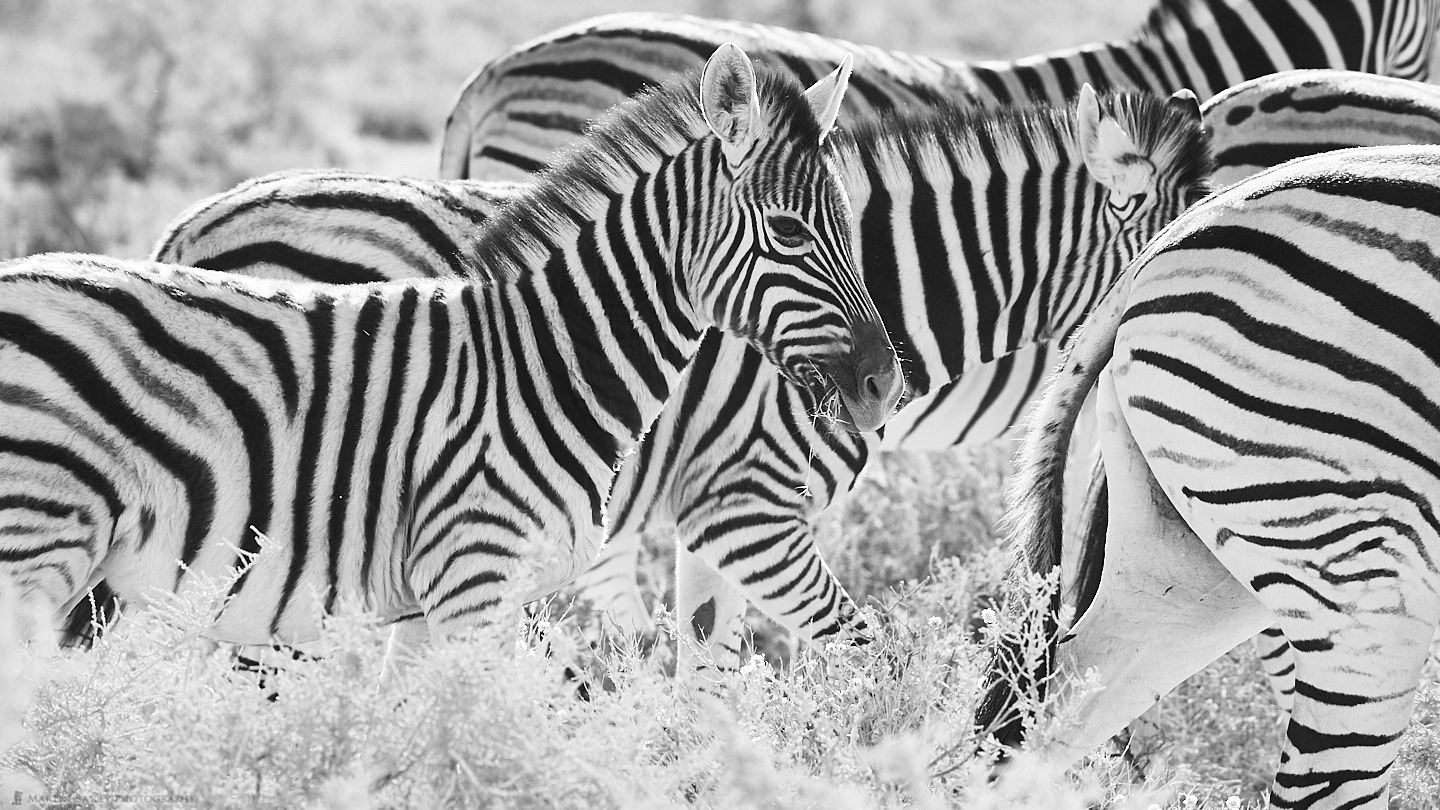
Note too that I was using an aperture of f/11 for most of these shots, to give myself a slightly wider depth-of-field than most people use for wildlife, giving separation between the animals, while enabling me to get a 1/1000 of a second shutter speed here, with ISO 1600. These are my golden settings for most of the work we do in Etosha, as I like that depth-of-field for wildlife. You might also notice that the zebra here are backlit, which some people will shy away from, but using the Shadows slider in Capture One Pro or Lightroom enables us to see nicely into the darker areas of the frame without making it look unnatural, and I love the rim-light on this young zebra’s back.
Springbok Procession
On our third day in Etosha, we drove through the park, from the East to the West side, and as you can see, there was more vegetation on this site. With that, many of the animals had made their way across the park, although water was still scarce, causing animals like these springbok to walk across the plains to the scattered waterholes.

In the background of this shot, you can hopefully make out a very faint pale-gray body of land behind the horizon of grass. That is the large salt flats of a now mostly dried up lake across the North of the park. The tree is also a relatively rare thing to see, with just a few of them out on these plains alone like that, so I thought it made a nice additional element.
I actually have a few other frames with many more Springboks in them, but I prefer this one with the spacing between fewer animals. It might not come across in the web-sized image, but I’ve had this shot as my desktop background on my iMac Pro since I got home and I really like the atmosphere, as though I’m back in Etosha, looking out across the plains.
Note that I changed my aperture to f/14 for this shot, to get just a little bit more depth of field, although at 234 mm that doesn’t give me pan-focus. I used a tool called RawDigger to check my focus distance and see that I was focussing around 110 meters out, and I can tell from my Photographer’s Friend iOS app that at f/14, that still has a limited depth-of-field of around 100 meters. My app also tells me that I would need to stop down my aperture to f/36 to get pan-focus, where everything from my focus area to infinity is sharp, but my lens doesn’t stop down that far, and I’d be struggling with diffraction at that aperture too. It’s really not an issue of course, as I feel that the distant subjects like the animals and lone tree being slightly out of focus, help to show us what the image is about, and provide a better sense of depth than we’d have if everything was totally sharp.
Flying Springbok
A moment or two after I shot the previous image, the last of these Springbok probably decided that we were a possible threat, and ran across the road behind our vehicle. I was able to photograph one of them in the air as it leapt probably the best-side of five meters in a single bound.
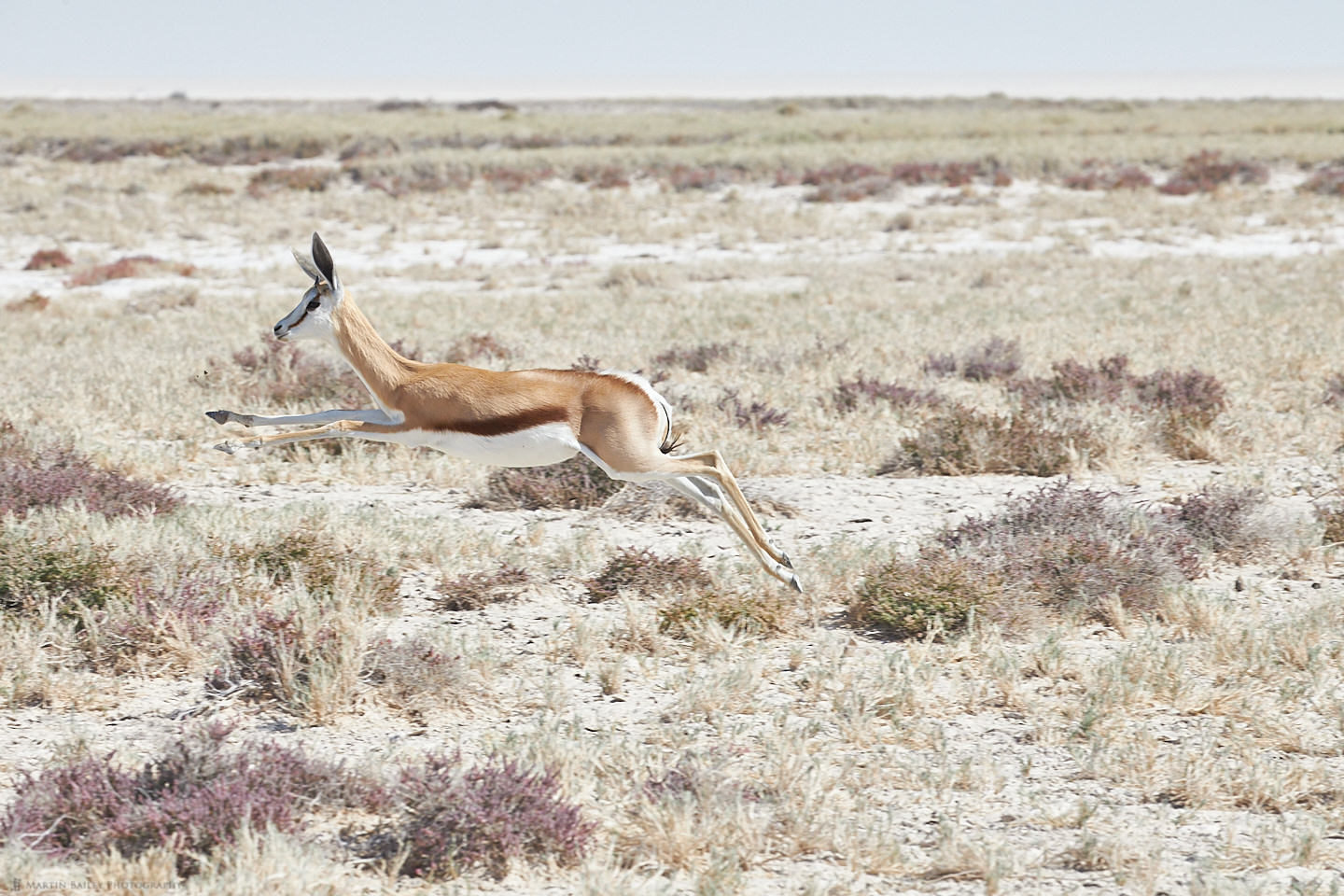
This is another reason why I like to keep my camera set up with a relatively fast shutter speed. Moments earlier I’d stopped down to f/14 for a little more depth-of-field, and because I shoot in Manual mode most of the time, I didn’t have time to change this as this Springbok took flight, but I had still kept my shutter speed relatively fast at an 1/800 of a second, in case something like this happened.
Bonus 3D Image
Although I like to keep my episodes down to ten images, I’m going to throw in a bonus image here, as I was also able to photograph another image pair while we were still moving as our vehicle came to a halt, resulting in enough parallax shift between the two images to be able to view in 3D. If you are able to go cross-eyed at the right distance, to the point that the two images align in the just the right way, please do give this a try. The distance that you need to be from your screen depends on the person and the size at which you are viewing the image. If you open this image in a wide browser window, you should be able to get it pretty big, and try moving your head closer and further away.

It can be tricky, and only around 50% of the people that I show these images to can actually align them perfectly to get a 3D image, but if you are able to go cross-eyed, please do give it a try. The degree to which you cross your eyes is also really important, but you can possibly actually see the images start to align as you adjust your eyes, until they fall into place. Note that I also added my logo, and had a bit of fun placing it in the foreground of the image, so that it looks like it’s almost in line with that foreground bush in 3D space.
The Lion Sleeps Today
Around mid-morning on our final full day in Etosha, we came across a pride of Lions that were having a bit of a rest. Another bonus of the dry weather is that this grass would usually be substantially higher, blocking our view of this mighty cat as he slumbers like a kitten. I think this is probably one of my favorite shots from the trip, simply due to serenity and peacefulness that I see in this image.
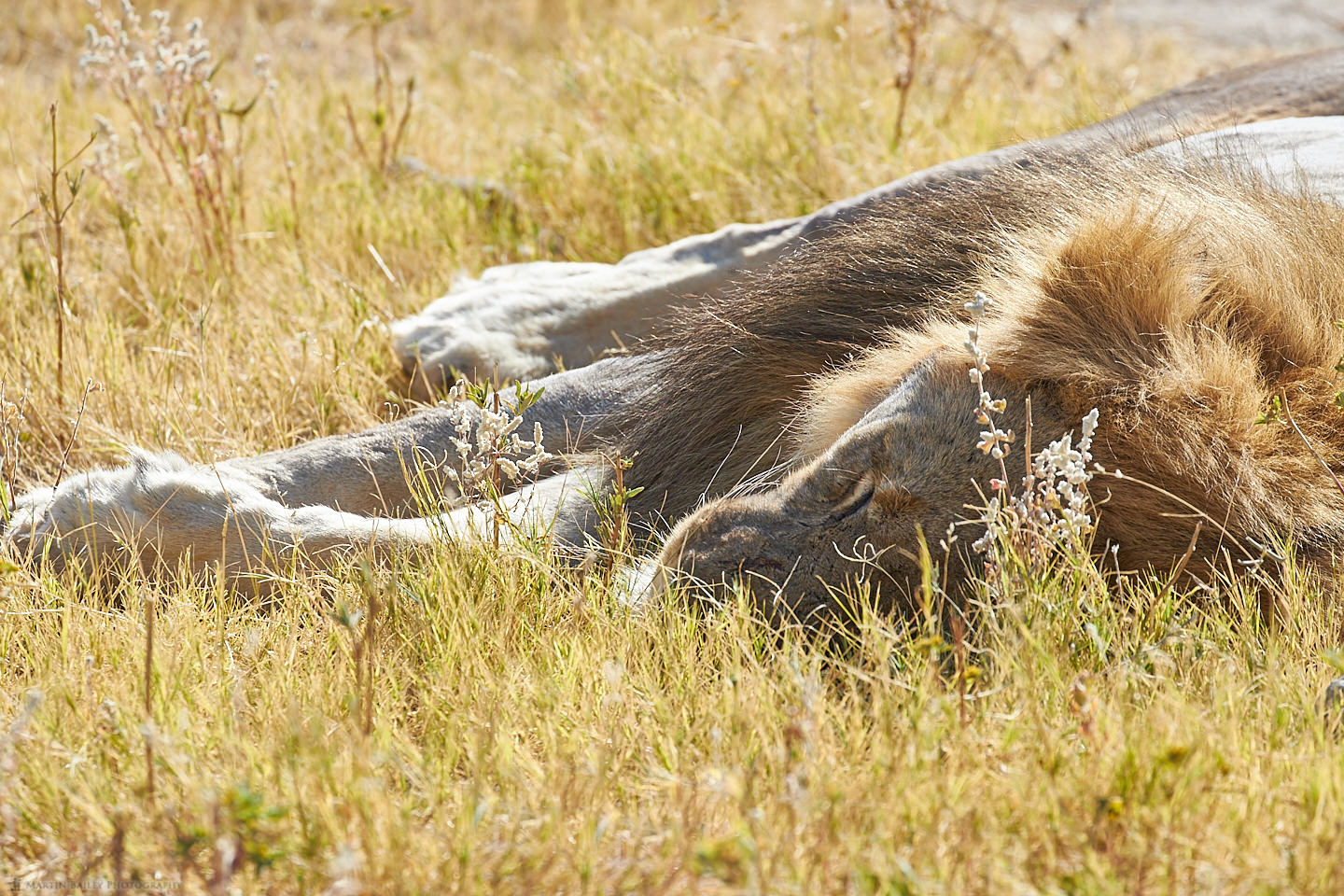
I’ve done a bit of cloning to remove some large dark clumps of vegetation from the foreground, and a rock in the
A Lion’s Pillow
A very close second favorite image from the trip is this shot of another lion that was using a fallen tree as a pillow for his morning nap. You can tell by the way his mouth has failed open that this lion was complete out of it, totally relaxed and unthreatened. He did wake up for a few minutes, and I have some shots of that too, but then he went straight back to sleep again for a while longer.
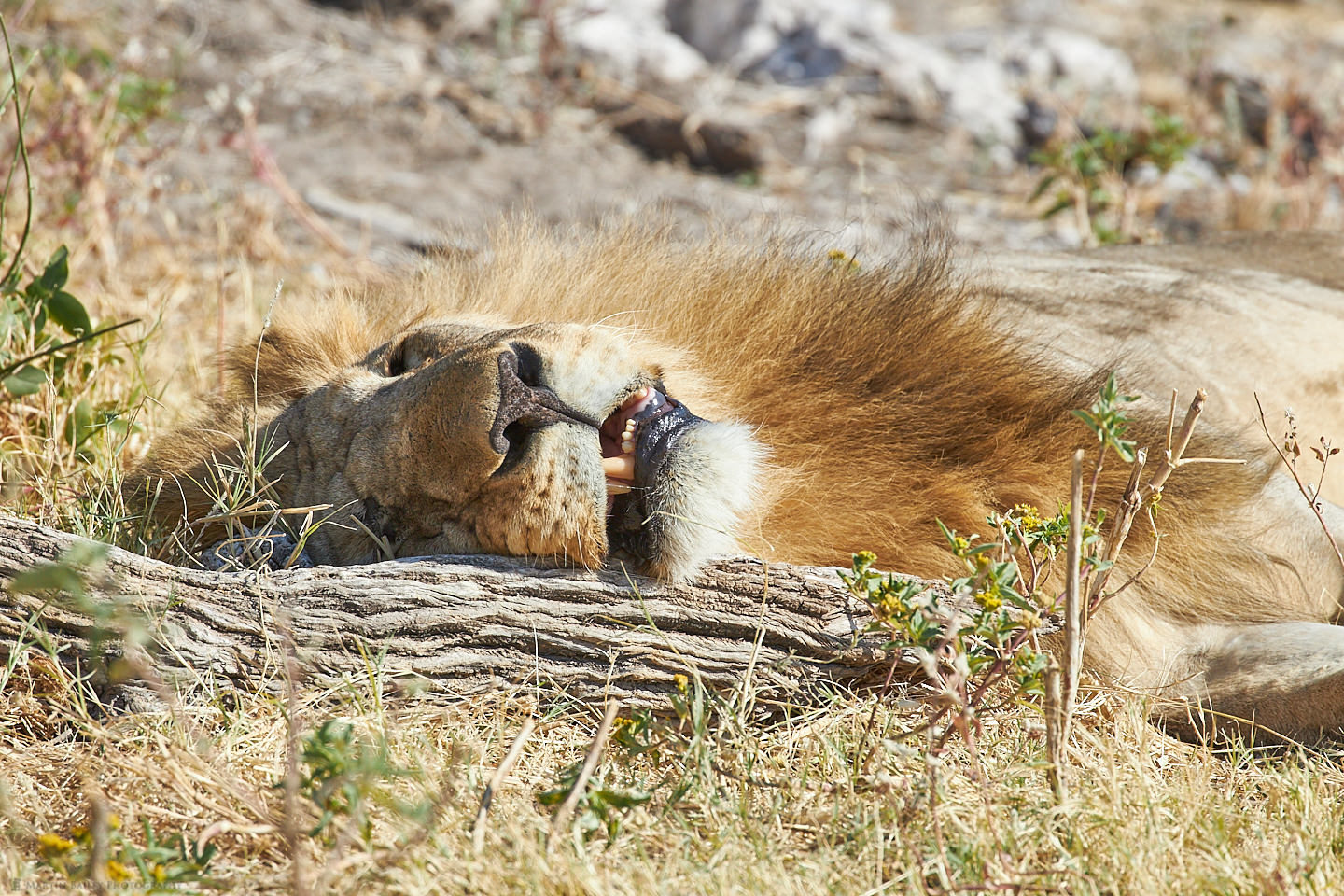
The vegetation in this shot was a little too busy to try and clean up, so I left this one as it is, but again, opened up the shadows a little with the Shadows slider in Capture One Pro. Although it’s nice to get action shots or dynamic poses, I have to admit, I’m often more attracted to photos like this, that give us a little bit of insight into what you might consider the private life of these awesome animals.
The Lion Awakes
If my memory serves me correctly, and there’s no telling if it does or not, I believe the lion in this next shot is the first one that we looked at, that was sprawled out in the grass when we found this pride. In fact, I seem to remember photographing the one using the log as a pillow right up until we drove away from this spot, so I think I’m correct.
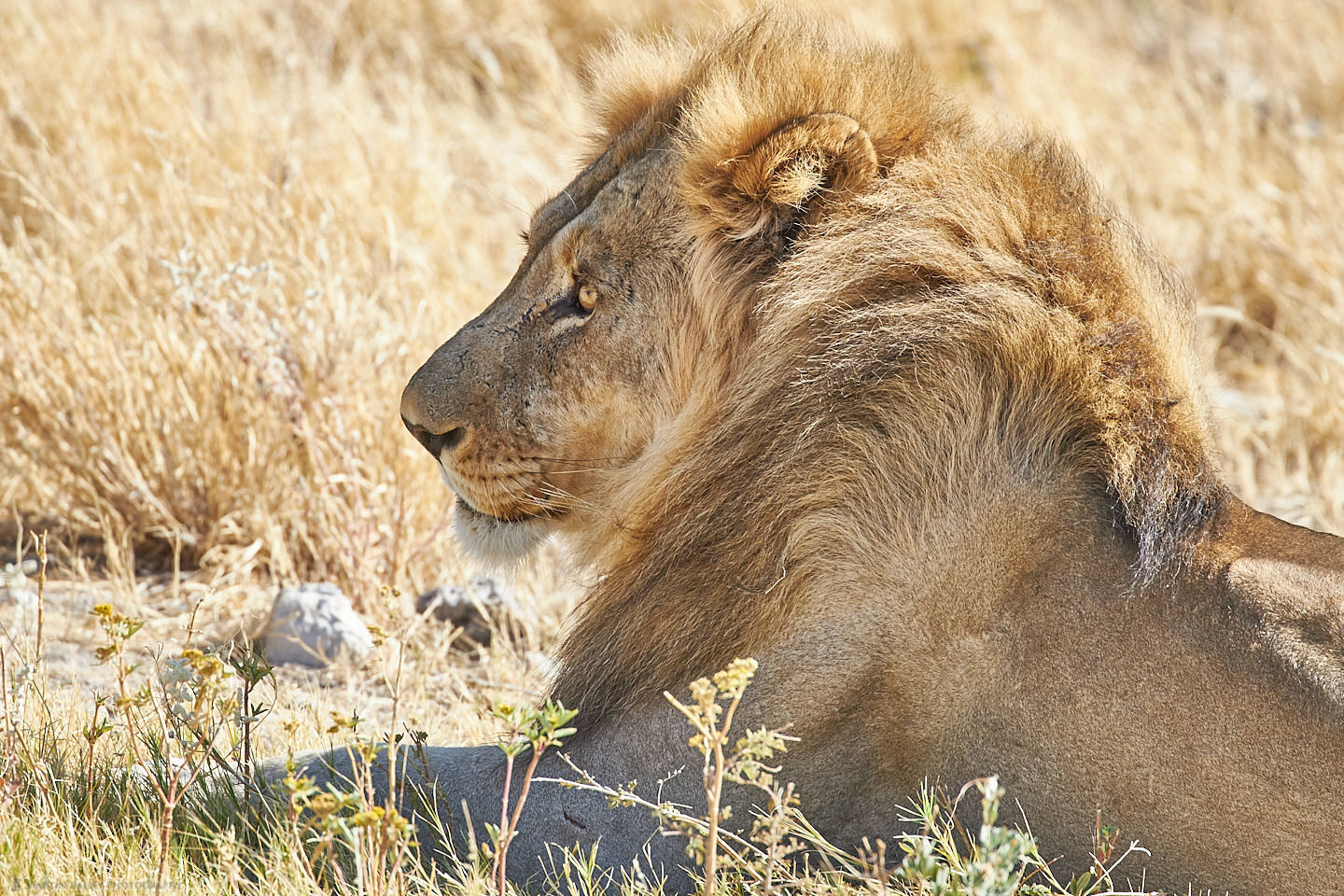
Here again, we were on the shadow side of the subject, but the Shadows slider served me well, enabling us to see this almost regal-looking lion as he peers at something in the distance. I love how the color of his eyes matches his mane and also the grasses in the background of this shot. It’s not hard to imagine why Lion’s are the color they are when you see them in their environment like this. I had opened up my aperture to f/10, to allow the background to go a little softer in the shallower depth of field. I was also still using my 1.4X Extender fitted to the 100-400mm lens, but for this shot, I had zoomed in as far as it will go, to 560 mm.
Elephant Drinking
Shortly after the lions, we passed by a waterhole with some elephants having a drink. This one was the last one to leave, and for some reason was purposefully stirring up the dark-gray mud from the bottom of the waterhole and drinking that.
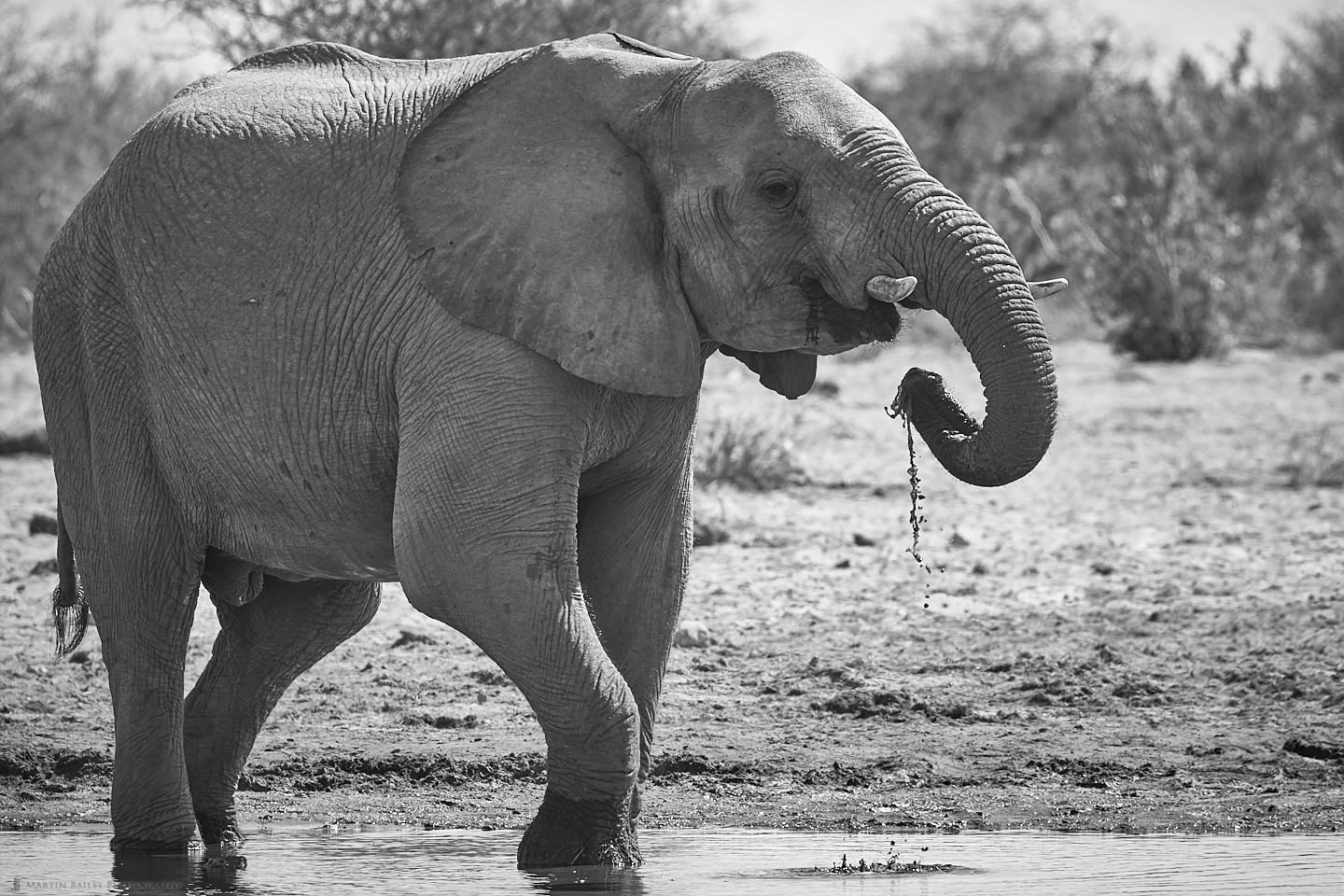
Once again, I went back to my Etosha f/11 for this shot, and as you can see, that gives me a nice amount of blur in the background while keeping the entire elephant sharp. Speaking of which, I love the texture of this elephant’s skin and I had initially enjoyed the contrast between the gray the warm-colored background, but I eventually settled on this black and white version, which I feel reduces the photograph down to its more essential elements, rather than having my attention grabbed by background color.
Participant Comments
So, that brings us to the end of the 10 photographs for this episode, and to the end of the travelogue series. As usual, at the end of the trip, I recorded a few comments from the participants, which I’ll play to you now. You’ll need to listen to the audio with the player at the top of this post to hear what each participant said about the trip.
Complete Namibia Tour and Workshop 2020 and 2021
If you are interested in joining me for either my 2020 or 2021 Complete Namibia Tour & Workshop, I have a few places still left on both tours, and you can find details of each tour at https://mbp.ac/namibia2020 and https://mbp.ac/namibia2021 respectively.
Show Notes
See my Complete Namibia Tour & Workshop details at https://mbp.ac/namibia2020 and https://mbp.ac/namibia2021 respectively.
Audio
Subscribe in iTunes to get Podcasts delivered automatically to your computer.
Download this Podcast as an MP3 with Chapters.
Visit this page for help on how to view the images in MP3 files.

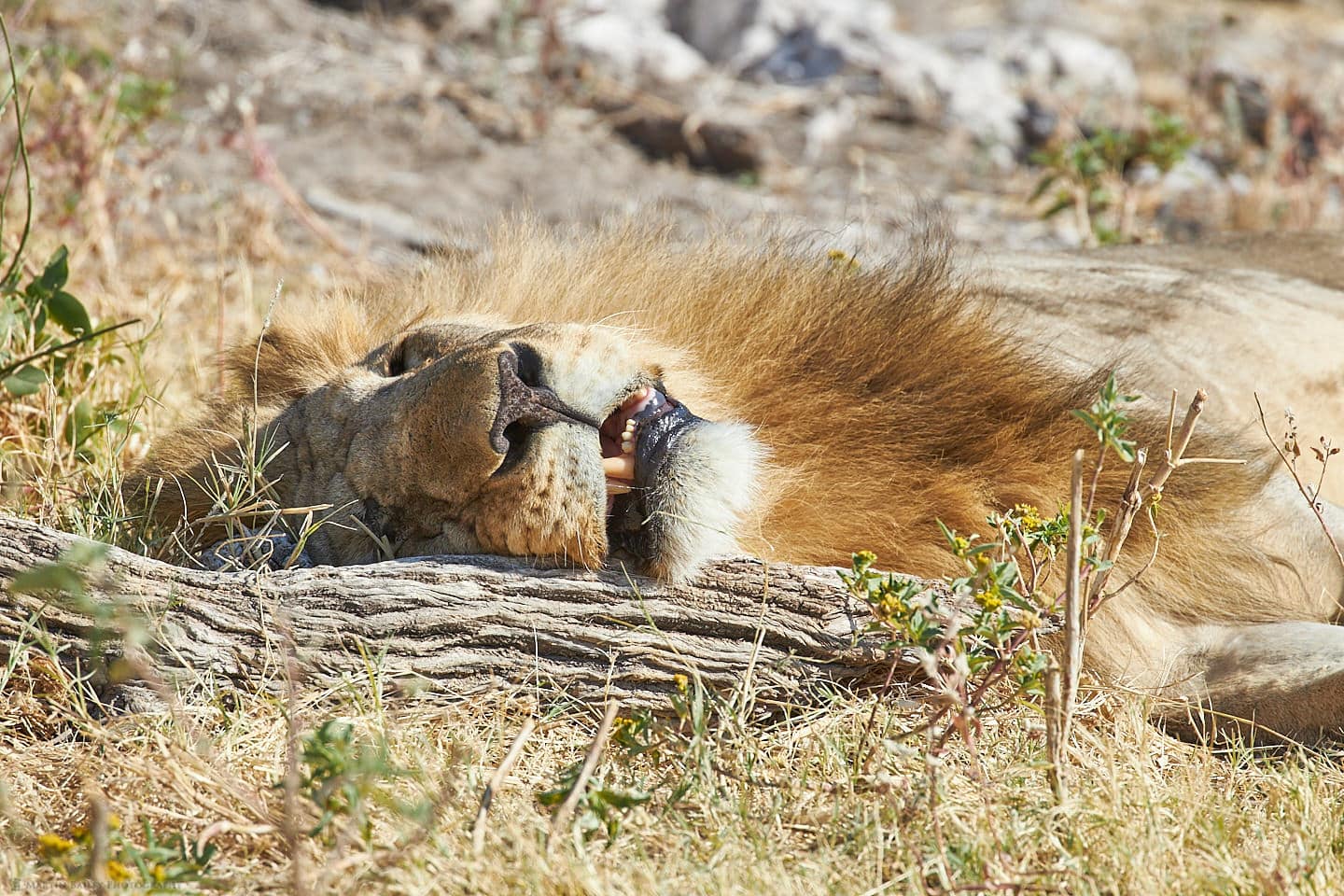
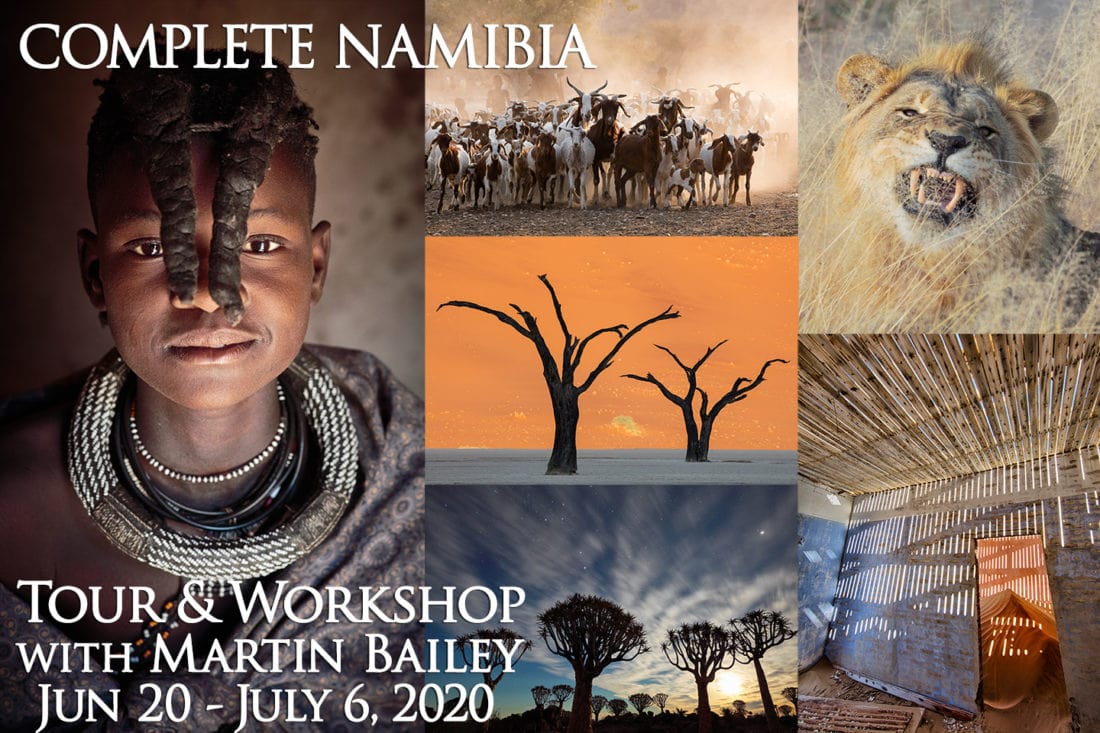
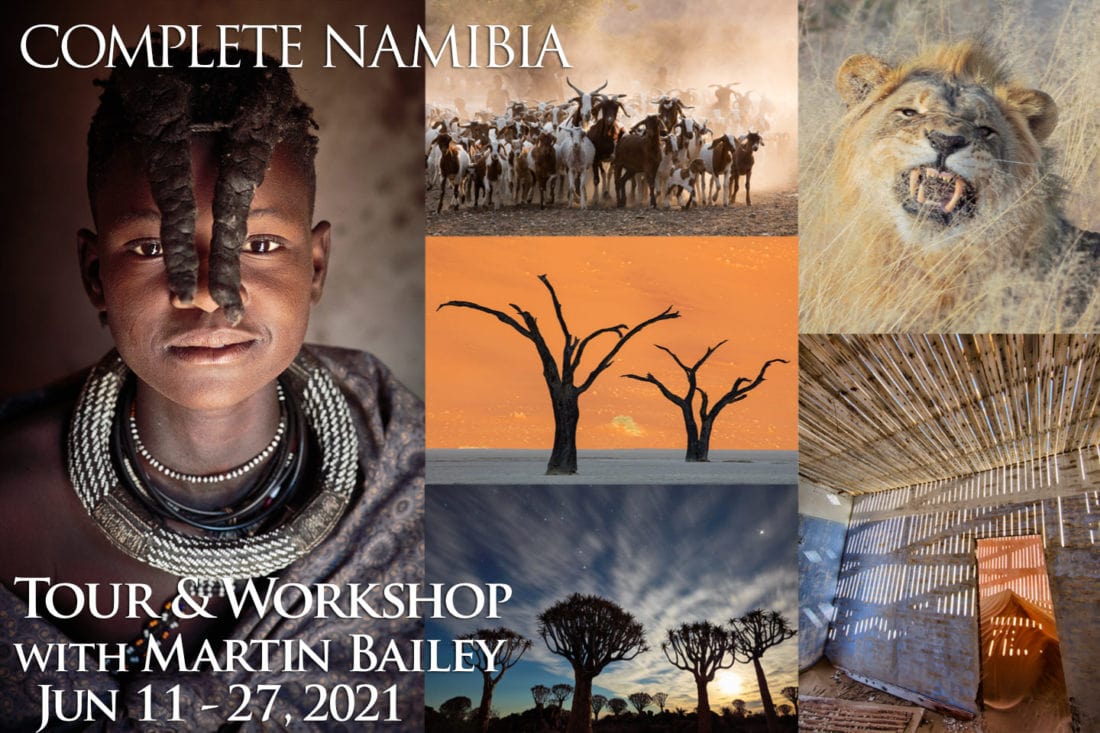

0 Comments